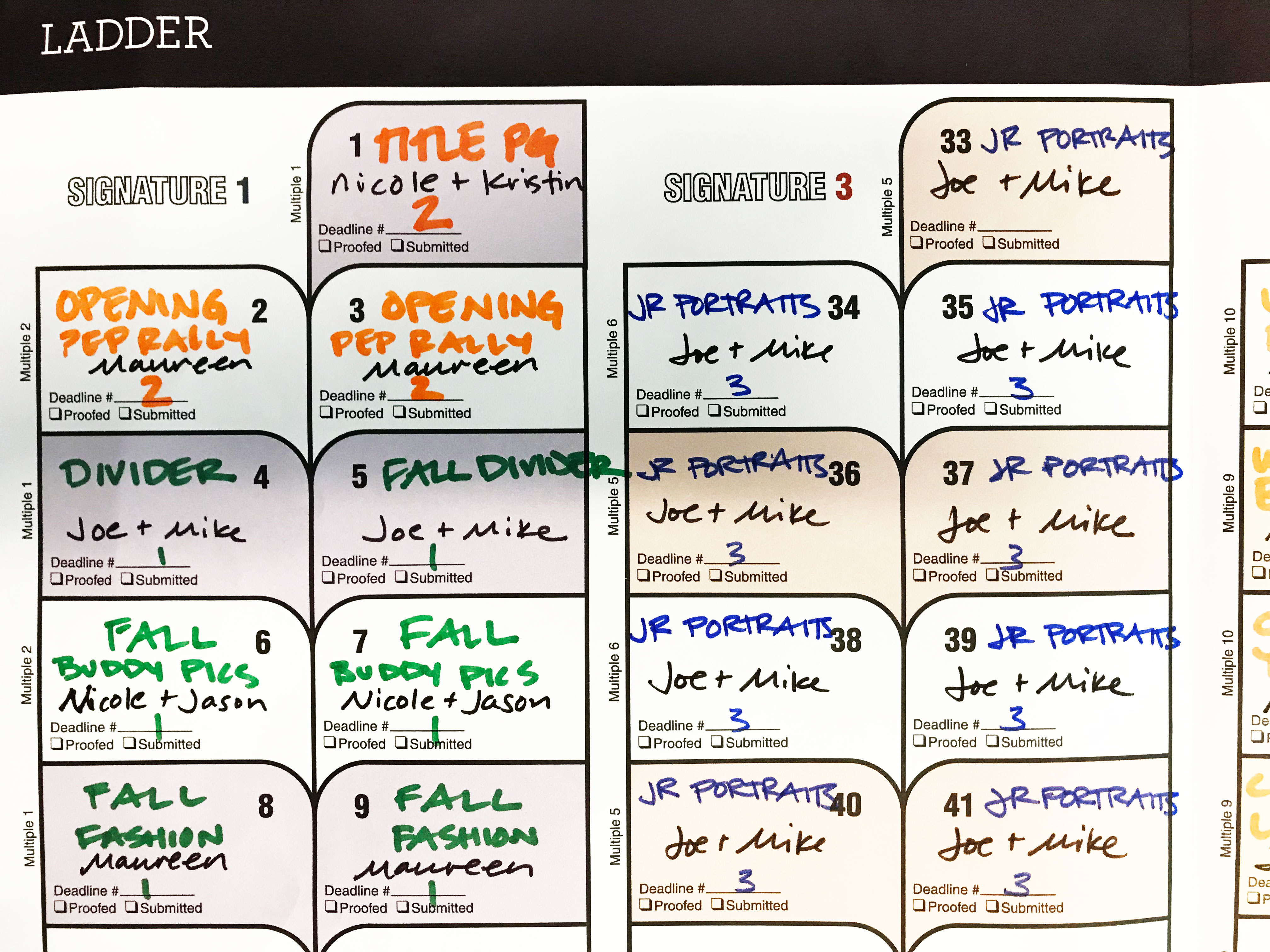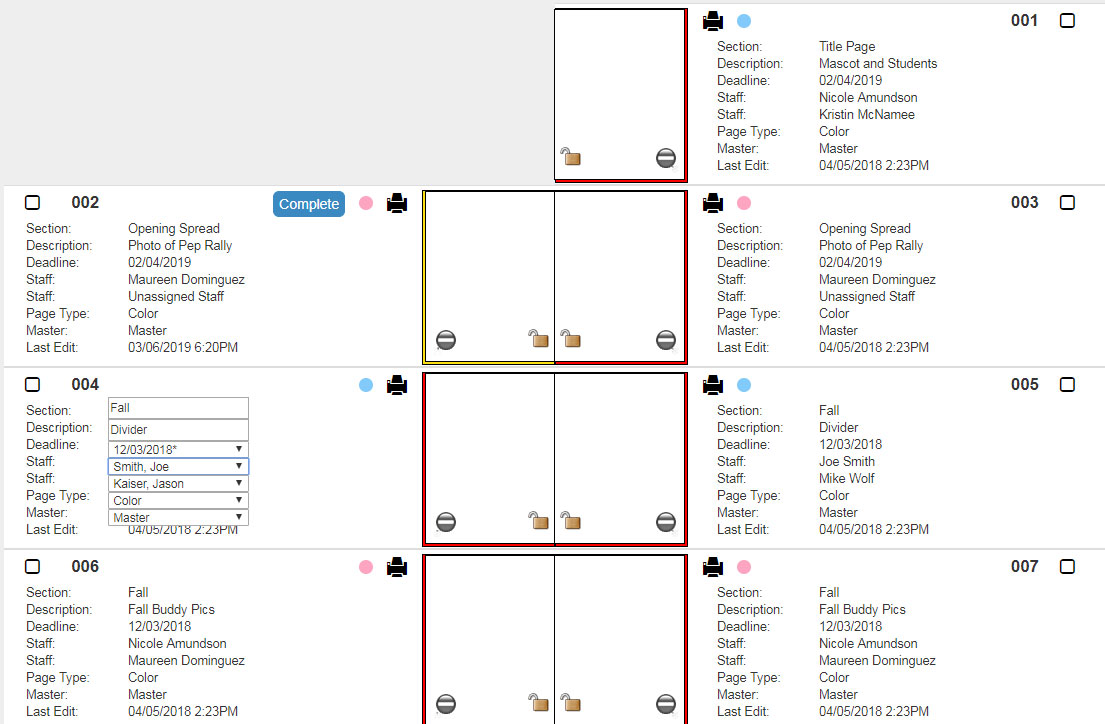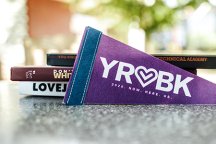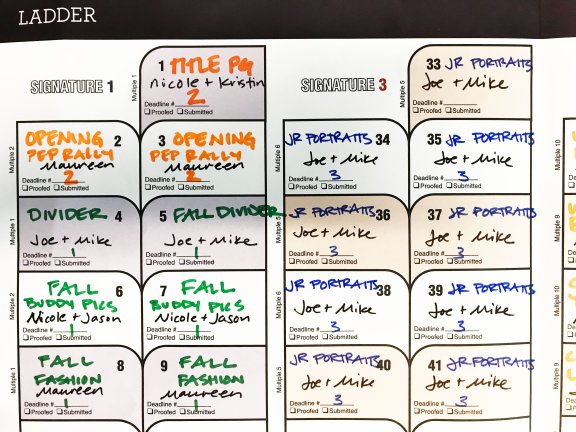Yearbooks Cover Information and Events In the Following Areas.
Student Life:
Activities in and out of school that affect reader’s lives. In general, 25-35% of coverage. What interests the students at your school? What do they wear? What do they listen to? What do they do with their friends? Where do they go with them?
Academics:
The reason students are in school. In general, 15-20% of coverage. What classes are offered at your school and what do students learn in the classes and how do they learn it?
Sports:
Before, during and after game season coverage. In general, 15-20% of coverage. What are the scores from the season? What were team highlights and traditions?
People:
Student, faculty and staff portraits and feature stories. In general, 25-30% of coverage. What are the personalities that walk your halls? What are the stories that few people know?
Organizations:
Day-to-day activities emphasizing membership and actions. In general, 10-15% of coverage. What do the organization members do? Where do they meet? What are the highlights and rewards of being in the organization?
For more ideas on how to creatively cover the events and activities at your school,
ask your rep about Jostens Story Starters.
Ladders are Organized By Multiples and Signatures
On the page ladder below, you can see that there is a gap after each 16-page segment, or signature. The multiples are indicated with colors. Take a look at Signature 1. Multiple 1 is light purple and multiple 2 is white. The plant will wait until it has all the pages in each multiple before printing it, so it is appreciated when multiples are submitted together in the same deadline. Most schools submit by signature since it is less confusing.
If your yearbook is not full-color, it is imperative that the color pages land within multiples. Have your rep double-check your ladder to make sure it is correct.
All Important Details are Organized on A Ladder Diagram.
The earlier you complete your ladder diagram, the better. Ideally, it is completed in the spring or summer so it is ready to go in the fall. Plan to spend several hours creating your ladder. It’s worth it!
- Start by laminating your paper ladder or use sticky notes. A different color marker or sticky should be used for each deadline. For instance, the first deadline might be red, the second orange, the third green, etc.
- Use the ladder to identify coverage area (i.e. people), content (i.e. freshmen), record deadlines (i.e. November 20) and note the people who are responsible for design, photography and writing on each page. The ladder should be as specific as possible about each detail.

Paper Yearbook Ladder // Completed with deadline and general content area information
When building your ladder, reference last year’s yearbook, a school calendar and your plant deadlines to make sure all events will be covered and can be submitted on time for the deadline assigned to it.
- The easiest way to begin a ladder is to transfer the information from last year’s ladder, making updates where necessary. In general, the same number of pages are used for each class’ portrait section as were used the previous year, with the common exception being the senior section which usually has larger portraits than the other grades.
- Talk to your rep if you feel you need to increase or decrease the number of pages in your yearbook, as that has an impact on your budget.
- To help the staff pace the workload, establish a minimum of two mini-deadlines for each plant deadline. For instance, if 32 pages are due in the plant deadline, you could establish two 16-page mini-deadlines or four 8-page mini-deadlines that land at equal intervals before the plant deadline.
- Pages do not need to be submitted in numerical order, so, for example, pages 94/95 could be submitted before pages 24/25 if desired.
- Assign all spreads for the entire year so editors and staff members know the full scope of their responsibility for the year. For best results, invite students to volunteer for their spread assignments so they are choosing their own work, a natural motivator.
- Finally, transfer the information from the paper ladder to the ladder in Yearbook Avenue. They are both important. The paper ladder is a quick and visible reference that can quickly indicate which pages have been submitted and which are due soon. The electronic ladder helps to keep your work organized within Yearbook Avenue as pages are being created.
- The paper ladder should hang in a visible place in the yearbook room. Many schools mark each page on the ladder diagonally corner to corner when it has been proofed and again when it has been submitted, creating an X on the page to indicate that it is complete.
- As deadlines are met, CELEBRATE WITH A PARTY!

Yearbook Avenue ladder with page information
Completing the entire ladder in advance will enable students to report the activities and events of the year as they happen rather than waiting until the assigned deadline to start coverage. Daily attention to the ladder guarantees that you will not miss an important verbal and visual content opportunity.


